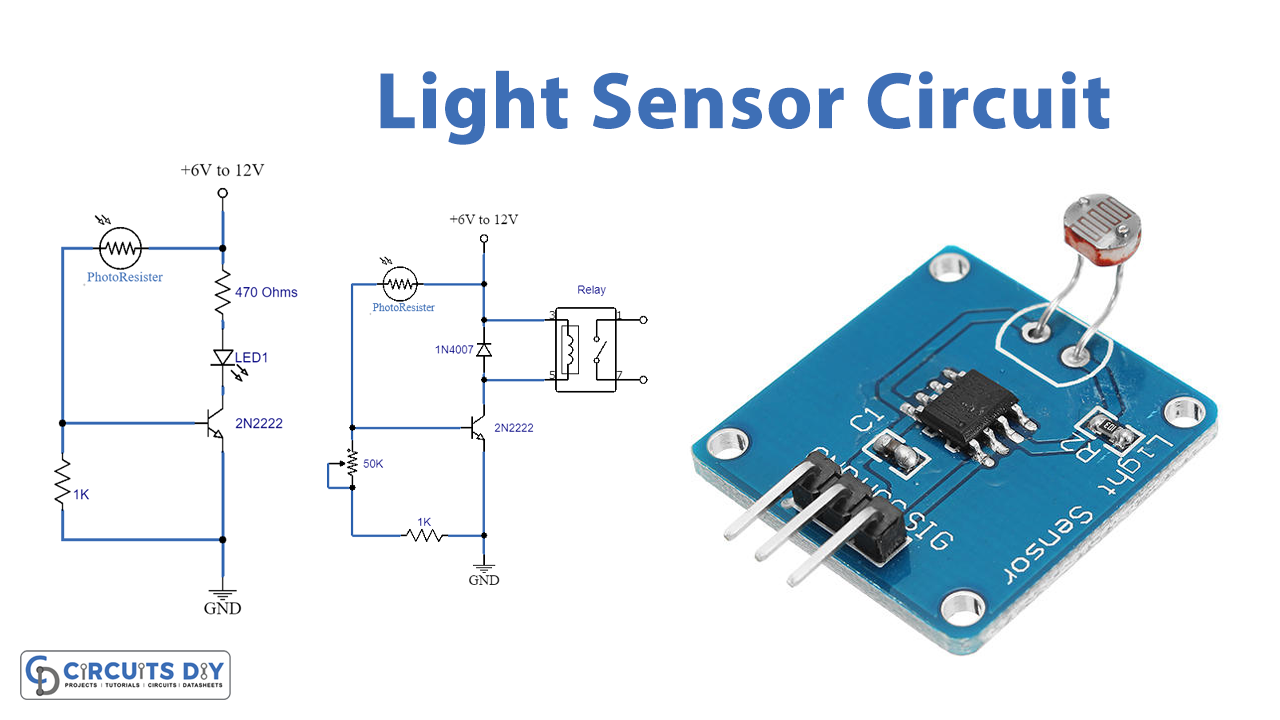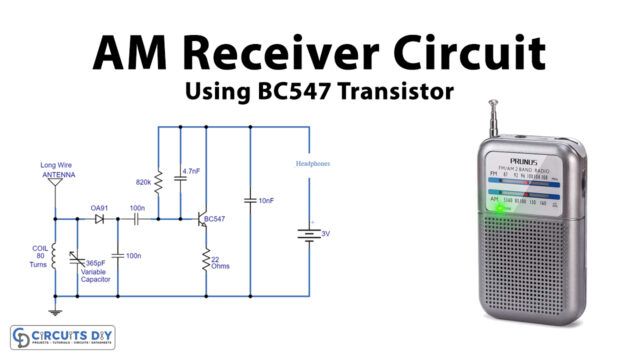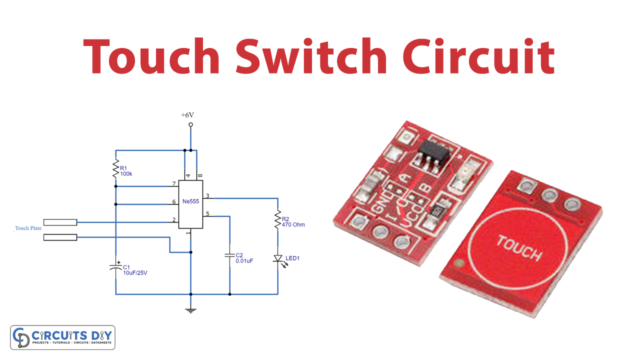A light sensor circuit activates when light is detected by the circuit. It is a simple circuit including a photoresistor followed by a transistor. When light strikes the surface of the photoresistor, light energy is converted into an electrical signal and thus, the circuit is operational.
Here, the light sensor is made with two different circuits,
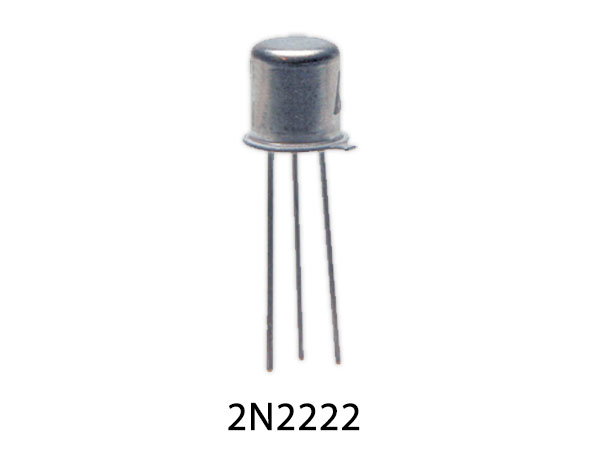
Hardware Components
The following components are required to make Light Sensor Circuit
| S.no | Component | Value | Qty |
|---|---|---|---|
| 1. | Photoresistor | LDR | 2 |
| 2. | Diode | 1N4001 | 2 |
| 3. | Relay | – | 2 |
| 4. | Transistor | 2N2222 | 2 |
| 5. | LED | – | 2 |
| 6. | Battery | 6V-12V | 2 |
| 7. | Resistor | 470Ω, 1KΩ | 1, 2 |
| 8. | Variable Resistor | 50KΩ | 2 |
2N2222 Pinout

For a detailed description of pinout, dimension features, and specifications download the datasheet of 2N2222
Light Sensor Circuit
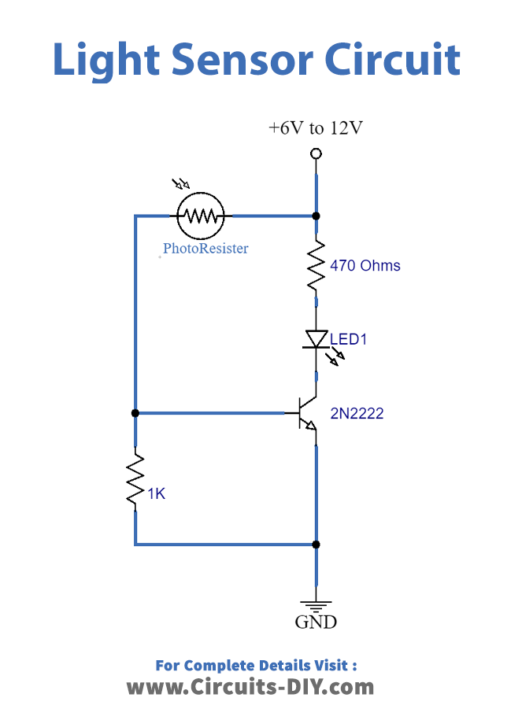
Working Explanation
This is the simplest circuit of light sensors. This circuit involves just a photoresistor that, when photons of light hit the base, produces an electrical signal. The signal generated triggers the 2N2222 transistor. Thus, lighting the LED.
Light Sensor with Relay Switch
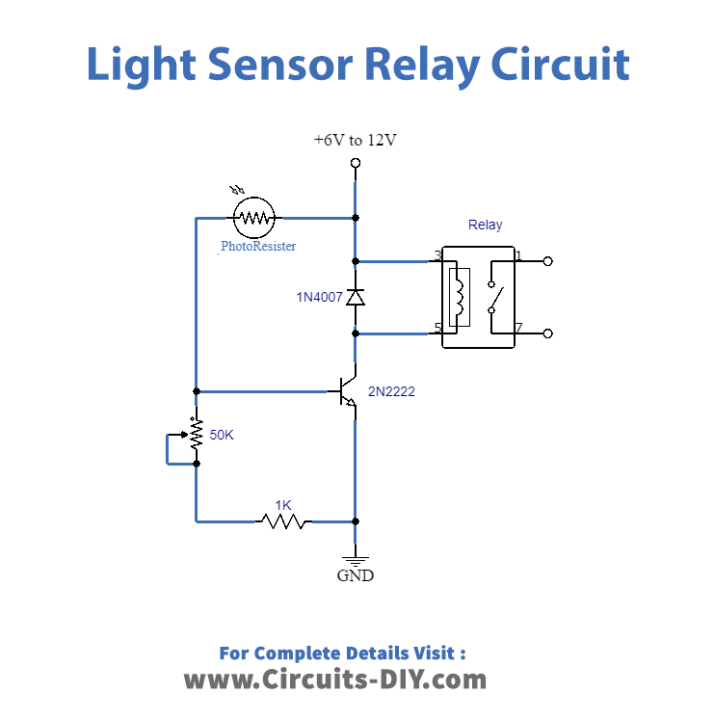
Working Explanation
The second circuit has a relay as an additional component. When the photoresistor or LDR detects light, it produces a signal such that transistor 2N2222 is turned ON. The relay switch is connected via a diode in the circuit. The relay switch activates with the triggering of the transistor. Hence, any component or circuit connected with the relay is eventually switched ON.
The selection of the circuit is such that it has the same voltage rating as that of the battery connected to the circuit. Moreover, the ampere rating of the relay should have a higher value than the current flowing in the circuit.
Application
- Cell phones and tablets adjust brightness.
- Automation for home and offices

